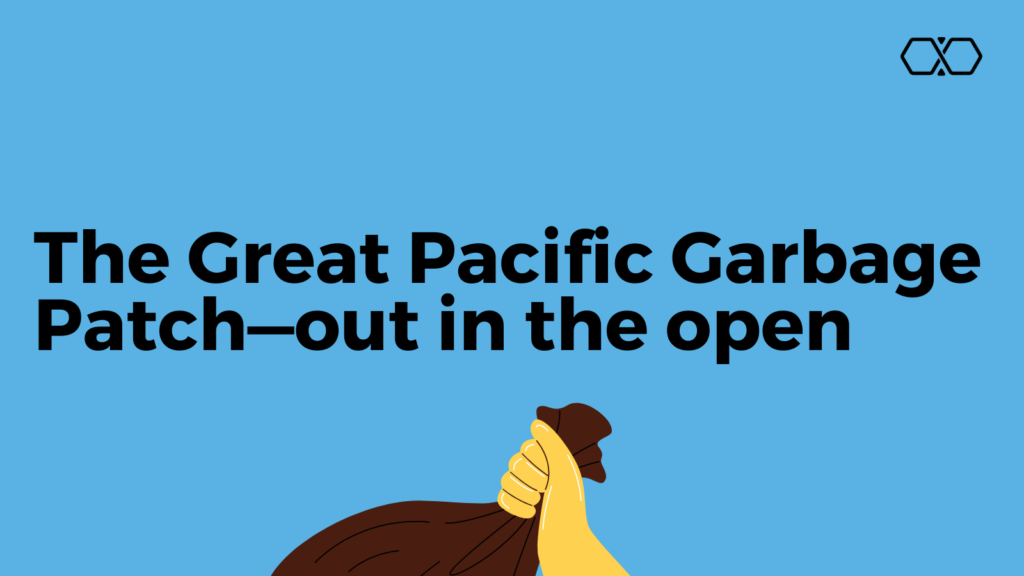
Are you aware of the Great Pacific Garbage patch? It is a large floating mass made up of plastic based waste which includes things like fishing gear. This floating mass is almost as big as an Island right in the middle of the Pacific Ocean. A BBC article explains how this garbage patch keeps building itself as:
“The area in the centre of a gyre tends to be very calm and stable. The circular motion of the gyre draws debris into this stable centre, where it becomes trapped. A plastic water bottle discarded off the coast of California, for instance, takes the California Current south toward Mexico. There, it may catch the North Equatorial Current, which crosses the vast Pacific. Near the coast of Japan, the bottle may travel north on the powerful Kuroshio Current. Finally, the bottle travels eastward on the North Pacific Current. The gently rolling vortexes of the Eastern and Western Garbage Patches gradually draw in the bottle.”
But surprisingly, that is not the biggest enemy of our water bodies. Our biggest enemy, unlike this garbage patch, is invisible and extremely small in size – It is micro-plastics. This non-biodegradable substance is not only the leading cause of marine pollution, but has also made its way to the human body through various food streams. But what exactly are micro-plastics and why should we worry about them?
What are microplastics?
Plastics remain for a long time. They do not dissipate or dissolve over time and only break down into further smaller fragments. When this breaks into micro fragments that can’t be seen by naked eyes, they are called micro-plastic. Owing to their small size, it becomes all the more difficult to track them down and remove them from the system. Particles of micro-plastics have been found in the intestines of fishes, bi-valves, birds and humans. We have found traces of it in the purest form of food -Mother’s milk. Some recent findings also dictate that micro-plastics may be able to travel by air as well making things more complex.
What is shocking here is that not only is the discarded plastic bottle of cream but also the residual cream left inside the bottle is a cause of pollution. Some creams and serums contain microbeads which behave in a similar manner and have been banned in several countries. Even washing your clothes in the machine or the regular wear and tear of your clothes actually contributes to this micro-pollution.
Microfibers and microplastics:
Over the course of a clothes life cycle, it will shed tiny, small fragments of the material called microfibers. These are usually less than 5 mm and invisible to the naked eye. Depending upon what the cloth is made of, the microfibre would be made of the same things. Example- If your cloth’s fabric is synthetics like polyester, it will be microplastic itself.
However, even if the material is natural, the use of dyes and other chemicals during the production process can very much contribute to the pollution. While cotton and wool may degrade over a period of time and the microfibre they are made of is not plastic, the chemical constituents of dyes and finishes can stay for a long time. Example – a cotton cloth coated with non-bio-degradable synthetic finish can release non-biodegradable microparticles too.
During washing, there is a natural shedding of materials which can lead to microfiber production. Our washing machines are not yet adept to remove microfibers and they eventually end up in the sludge residue or the wastewater. Repeated recycling of the wastewater may reintroduce the microfibers back into the system. Through water it comes back to humans in ways like sea-food, water etc.
How to tackle the issue of microplastics?
Although this area is one which has come under heavy scrutiny by the fashion industry recently, there are still a lot of gaps which need to be thoroughly researched. There is no one-solution-fits-all for this problem, but there are certain steps that we can take up to tackle this issue –
- Replace the Source – opt for natural materials such as cotton, linen, wool, hemp etc. which will not shed microplastics.
- Trap it at the Source – There are innovations happening on this with efforts to trapping microplastics in washing machine, stopping it from entering the water systems, treating the yarns and fabrics to reduce shedding etc. However, most of it is at small scale and/ or is has lack of reverse supply chain to collect back the tapped micro-plastics and reuse it.
- Have the right washing habit – No, washing all of your clothes after each wear is not worth it. Depending on usage and environmental conditions find the best way to wash your clothes as per the need.
- Use it right- Try to reduce the friction by avoiding washing soft and hard materials such as clothes and shoes together.
- Contribute to the solution by doing research and finding optimal solutions which can lessen the problem! Innovation will be key and this space is still widely open to find its solutions.